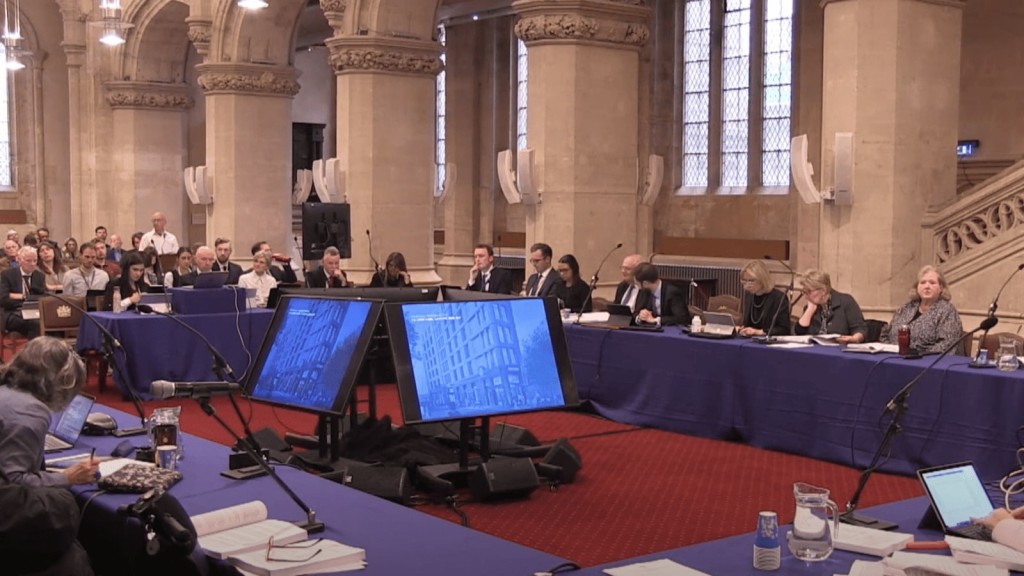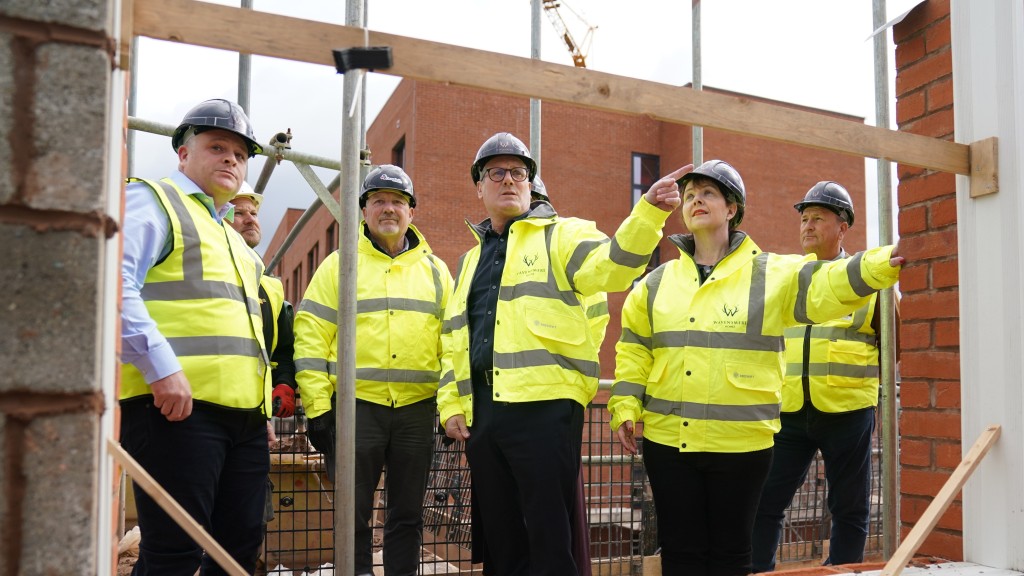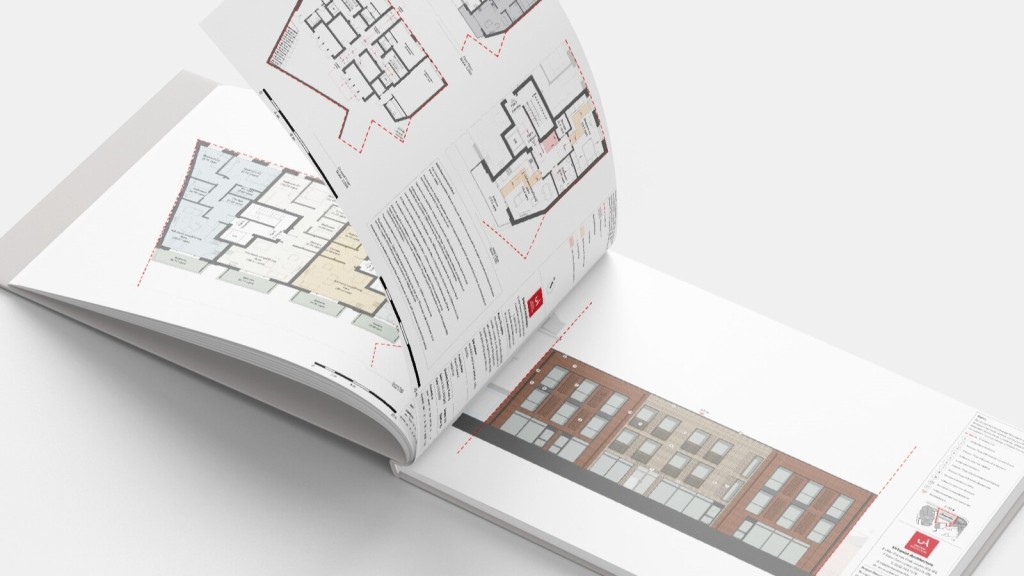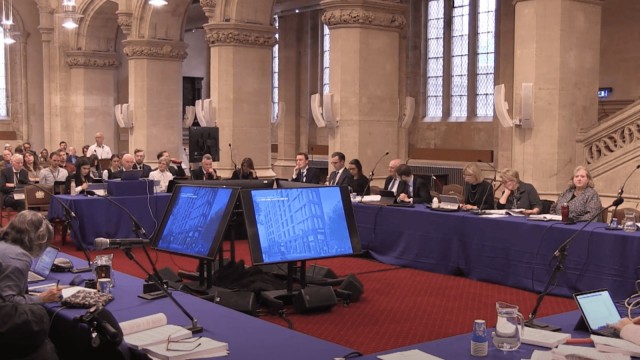Read next
The latest news, updates and expert views for ambitious, high-achieving and purpose-driven homeowners and property entrepreneurs.


If you've been following the headlines lately, you'll know that the UK's planning system is on the cusp of its most significant transformation in decades.
And no, I'm not exaggerating.
In what could be described as a seismic shift in planning policy, Deputy Prime Minister Angela Rayner has unveiled reforms that could fundamentally alter how planning decisions are made across England.
The government's message is clear: planning permission without planning committees is becoming a reality, marking the end of committees as a barrier to streamlined development.
But what does this really mean for the future of planning decisions? And more importantly, is this the solution we've been waiting for to unlock the housing crisis?
Let's dive into the details.

At the heart of these reforms lies the government's commitment to deliver 1.5 million new homes by 2029. A housebuilding target so ambitious naturally demands fundamental changes to our planning decision-making processes.
According to government planning statistics, between January and March 2024, only 19% of major applications were determined within the statutory 13-week period, while just 38% of minor applications met their eight-week deadline.
Unfortunately, these delays stalled housing developments and increased the costs of delivering much-needed homes. The delays caused by planning committees rejecting applications contrary to professional advice further compound these inefficiencies, leading to prolonged housing shortages and financial strain on developers and councils.
The proposed reforms pivot towards professional expertise, empowering planning officers to approve developments that align with local plans without the approval of the planning committees. This shift acknowledges a crucial point: planning decisions should be based on professional judgment rather than political considerations.
Further strengthening this shift, more recently on 28 May 2025, Deputy Prime Minister Angela Rayner unveiled a comprehensive package of reforms designed to accelerate housing delivery, particularly by supporting SME developers. These reforms include fast-tracking planning approvals for minor developments of up to nine homes, delegating decision-making to planning officers, and easing certain regulatory requirements. The initiative aims to reduce bureaucratic delays and empower smaller builders to contribute more effectively to the government's housing targets. Of course, we will keep you posted on how these proposed reforms play out over the coming months.

The UK planning system, designed to empower local communities by shaping decisions on what is built and where, is now showing significant signs of strain. While planning officers determined 96% of applications in the second quarter of 2024, many major applications remain caught in a bottleneck.
Planning committees, which vary widely in their approach across local planning authorities, are slowing down the decision-making process or turning down planning proposals, adding to a growing backlog of over 120,000 planning applications. A reliance on committees for even routine applications has created bottlenecks, with decision-making often swayed by vocal opposition rather than grounded in planning merit.
This inconsistency erodes trust in the system, with applicants and communities alike expressing frustration over delays and unpredictable outcomes. These inefficiencies have sparked calls for reform, as the current system struggles to balance local input with the need for timely decision-making on critical developments.
Planning committees have operated since the Town and Country Planning Act established our modern planning system. However, the government’s planning reform working paper identifies several persistent issues:

The proposed planning committee reforms and the new NPPF (December, 2024) share a common goal: streamlining planning processes to deliver sustainable development more effectively.
By handing greater powers to planning officers whilst scaling back committee oversight, the policy makers seek to slash red tape, speed up housebuilding and offer clearer guidance to both developers and local communities.
Central to these reforms is a proposed national scheme of delegation, which would require local planning authorities to delegate decisions to officers when applications align with local plans. The updated NPPF supports this shift by emphasising the importance of adhering to local plans, which are democratically developed and independently examined.
By removing the procedural redundancy of committees reviewing applications that align with established policies, the reforms prioritise professional judgment and expedite the delivery of much-needed homes and infrastructure. This ensures that local and national planning frameworks operate cohesively, minimising delays and disputes.
The introduction of mandatory training for planning committee members represents another key reform.
By requiring committee members to undergo training on planning law, policy interpretation, and material considerations, the reforms ensure that even where committees retain a role in decision-making, their contributions are informed, reducing the likelihood of appeals and delays caused by decisions that fail to align with planning policy. This ensures that when committees do play a role, their decisions are informed, transparent, and defensible.
The Planning and Infrastructure Bill, expected to lay the legislative groundwork for these reforms, complements the updated NPPF’s emphasis on creating a predictable and efficient planning system.
With the new scheme of delegation and training requirements scheduled to take effect by early 2025, the reforms provide local authorities with a clear timeline to adapt their processes.
This interconnection with the NPPF creates a comprehensive framework that supports both short-term operational improvements and long-term planning objectives, offering certainty to developers while ensuring communities benefit from efficient and accountable decision-making.

The current debate about planning reform ultimately centres on a crucial question: who is best placed to make complex planning decisions for difficult planning applications?
As we examine the role of professional expertise in planning, a compelling case emerges for a system that prioritises qualified judgement over political deliberation.
Current planning committees face a significant expertise deficit. Whilst committee members often bring valuable local knowledge, they frequently lack the technical understanding needed to evaluate complex planning applications.
In our experience, many planning committee members also struggle to read planning drawings or fully understand material planning considerations, leading to delays and inconsistent decision-making.
Qualified planning officers are the cornerstone of streamlined planning permission, yet they remain underutilised in our current system. These professionals typically hold advanced degrees in town planning, urban design or related fields, alongside years of practical experience.
Yet their role has traditionally been limited to making recommendations rather than decisions.
The reforms would finally recognise their expertise, allowing them to make determinations on applications that align with agreed local plans.
Streamlined planning permission through evidence-based decision-making represents a crucial evolution, bypassing planning committees to ensure faster and fairer outcomes.
Professional planners are trained to evaluate applications against established criteria, policy frameworks, and technical standards. This approach reduces subjectivity and ensures decisions are grounded in planning merit rather than political considerations.
The government’s working paper indicates that when committees reject applications against officer advice, these decisions are frequently overturned on appeal, creating unnecessary delays and wasting taxpayers' money.
The government is looking to international best practices as it develops these reforms, considering how other countries structure their planning systems to balance professional expertise with community engagement.
The Swedish model, in particular, demonstrates how professional decision-making can coexist with robust community engagement through early consultation.
The potential benefits of professional-led planning are clear. Areas adopting greater delegation to planning officers are expected to see notable improvements, including faster application processing, fewer appeals, and enhanced developer confidence.
Ultimately, empowering planning professionals could be a crucial step in addressing the housing delivery challenges facing Britain.

The 'Not In My Back Yard' phenomenon has become a pervasive issue in the UK’s planning system, creating significant obstacles to housing delivery.
While NIMBYism often stems from genuine concerns about local character, infrastructure capacity, or environmental impact, it has evolved into a reflexive resistance to change, often without a full understanding of the broader planning context.
We, as residential architects and town planners working across the UK, believe that addressing this challenge is vital to solving Britain’s housing crisis, ensuring that decisions are guided by evidence, policy, and professional judgment rather than vocal minority opposition.
Since the creation of the modern planning system under the Town and Country Planning Act, planning decisions have been deeply influenced by local community concerns.
While democratic involvement in planning is essential, NIMBYism has consistently skewed decision-making. Local opposition often derails developments that comply with local plans or address critical housing shortages, particularly in affluent areas or in the Green Belt where resistance to change is the most pronounced.
For decades, this phenomenon has perpetuated a pattern where local preferences override national imperatives, creating a troubling disparity between where housing is needed and where it is actually delivered. Sites allocated in local plans are frequently delayed or rejected by local council committees under pressure from objectors.
This not only undermines the purpose of strategic planning but also creates a ripple effect, with delayed projects exacerbating housing shortages and increasing costs for developers and councils alike.
Planning committees are particularly vulnerable to the pressures of NIMBYism. Committee members, who often lack formal training in planning or the built environment, may base their decisions on local sentiment rather than technical evidence or policy compliance. This leads to a pattern of refusals for developments that align with established local plans and housing need assessments.
We have encountered numerous cases where committee members were unable to interpret planning drawings or evaluate material considerations effectively. Instead, decisions were swayed by vocal opposition at public meetings, even when objections lacked planning merit.
This misuse of democratic processes turns planning committees into arenas for political debate rather than forums for evidence-based decision-making.
One of the most telling consequences of NIMBYism is the pattern of successful appeals against committee refusals. The Planning Inspectorate frequently overturns these decisions, upholding the recommendations of planning officers who evaluated the applications based on technical merit.
This creates a cycle of inefficiency: developments are delayed, councils incur unnecessary costs, and developers face uncertainty, all while housing delivery stalls. By prioritising local sentiment over technical merit, committees frequently delay or derail developments that align with broader housing strategies.
The financial implications of NIMBY-driven decisions are also profound. Appeals against unjustified refusals not only strain local authority budgets but also divert resources from other essential services. Councils may lose substantial New Homes Bonus payments tied to housing delivery targets, further exacerbating financial challenges. These avoidable expenses underscore the need for reforms that prioritise professional judgment over populist opposition.
The impact of NIMBYism is not theoretical—it plays out in real communities, delaying housing and infrastructure projects that are desperately needed:
These examples demonstrate how committee decisions influenced by NIMBY opposition not only delay developments but also undermine confidence in the planning process, discouraging future investment and innovation.

The proposed reforms raise a fundamental question: how do we balance efficient, professional decision-making with meaningful democratic oversight?
The answer lies not in choosing between democracy and expertise, but in reimagining how communities engage with the planning process.
The traditional view that pits local democracy against professional expertise presents a false choice. Modern planning requires both elements working in harmony. Evidence from successful planning authorities demonstrates that when community input is focused on plan-making rather than individual applications, both democratic engagement and development outcomes improve.
Initiatives such as the "call for sites" process, which invites local input on potential development areas during the local plan preparation stage, exemplify how structured community participation can shape strategic planning effectively.
The new system introduces multiple layers of protection to ensure accountability. Professional planning officers must document their decisions against clear criteria, with transparent reporting requirements.
The reforms establish an enhanced appeals process for controversial cases and introduce independent review mechanisms for major developments. These safeguards ensure that whilst decisions may be streamlined, they remain subject to proper scrutiny.
Streamlined planning permission ensures efficiency without compromising meaningful community engagement. Rather, the reforms shift the focus to earlier, more meaningful consultation during the local plan-making stage.
This approach, successfully implemented in countries like Sweden and the Netherlands, ensures communities shape the strategic vision for their areas rather than engaging in repeated battles over individual applications that comply with agreed plans.
Perhaps most significantly, the reforms elevate the role of local plans as the primary vehicle for democratic oversight. These plans, developed through extensive community consultation and subject to independent examination, provide the framework within which professional decisions are made.
By focusing community energy on plan-making, we ensure local voices shape the future of their areas whilst allowing professional expertise to guide implementation.

The shift to a professionally-led planning system marks a pivotal evolution in British town planning. By avoiding planning committees or by reducing committee involvement in compliant applications, the reforms empower skilled planning officers to make informed, evidence-based decisions, cutting delays and unnecessary costs while delivering the homes and infrastructure communities need.
Central to success is robust training for planning officers and committee members, ensuring all decision-makers possess the expertise to navigate complex planning principles. The national scheme of delegation will further standardise processes, offering greater transparency, accountability, and certainty for developers and communities alike.
Technology will drive this transformation, with digital consultation tools and AI-assisted planning analysis fostering earlier engagement, improving efficiency, and building public trust. These innovations enable collaboration among local authorities, developers, and residents, enhancing decision-making and strengthening planning democracy.
Ultimately, these reforms promise to unlock housing delivery, drive economic growth, and improve quality of life. Success requires commitment from all stakeholders to embrace change and build a planning system that meets Britain’s future needs.

Urbanist Architecture’s founder and managing director, Ufuk Bahar BA(Hons), MA, takes personal charge of our larger projects, focusing particularly on Green Belt developments, new-build flats and housing, and high-end full refurbishments.
We look forward to learning how we can help you. Simply fill in the form below and someone on our team will respond to you at the earliest opportunity.
The latest news, updates and expert views for ambitious, high-achieving and purpose-driven homeowners and property entrepreneurs.
The latest news, updates and expert views for ambitious, high-achieving and purpose-driven homeowners and property entrepreneurs.










We specialise in crafting creative design and planning strategies to unlock the hidden potential of developments, secure planning permission and deliver imaginative projects on tricky sites
Write us a message